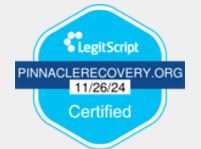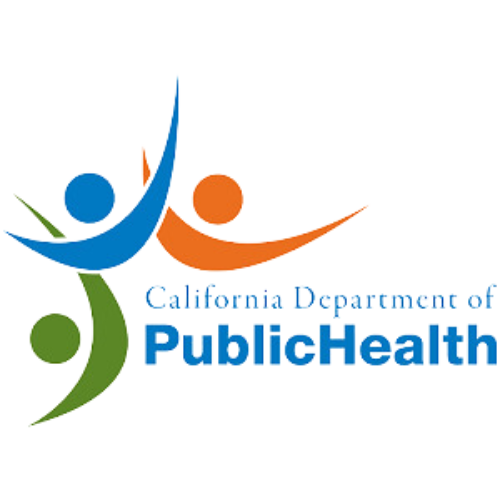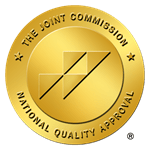Key signs of alcohol addiction include both physical and behavioral changes you’ll need to monitor. Watch for increased tolerance requiring larger amounts to achieve effects, persistent facial redness, disrupted sleep patterns, and unsteady movements. You may notice social isolation, neglected responsibilities, and failed attempts to quit. Secret drinking and dishonesty about consumption often emerge as the disorder progresses. Understanding these warning signs is imperative for early intervention and support.
Physical Warning Signs of Alcohol Dependence

The physical warning signs of alcohol dependence often manifest through visible changes in a person’s appearance and bodily functions. You’ll notice facial indicators like persistent redness, spider veins, and jaundice, along with clammy skin and unusual pallor. Sleep disturbances become evident through excessive fatigue and disrupted rest patterns. Chronic drinking leads to excessive night sweats that significantly impact sleep quality. As organ damage progression occurs, you’ll observe gastrointestinal symptoms, including frequent nausea, bloating, and abdominal pain. The body shows deterioration through unsteady gait, tremors, and slurred speech. Cardiovascular changes manifest as rapid heartbeat and heightened blood pressure. Watch for swelling in the legs and abdomen, indicating liver dysfunction. These physical markers typically accompany declining personal grooming habits and general physical appearance, signaling the advancing stages of alcohol dependence. These symptoms typically begin within eight hours after the last alcoholic drink consumed.
The Need for Increased Amounts Over Time
Your body develops tolerance to alcohol through repeated exposure, requiring progressively larger amounts to achieve the same effects you once felt with smaller quantities. You’ll notice this increasing tolerance when you need more drinks to function “normally” or to feel the desired level of intoxication that previously came with fewer drinks. This pattern has become increasingly common, as over half of Americans reported increased alcohol consumption during COVID-19 lockdowns. This physical adaptation is a clear warning sign of developing alcohol dependence, as your brain and body become less sensitive to alcohol’s effects while simultaneously growing more reliant on its presence. Over time, this can lead to central nervous system changes that affect judgment and behavior control. This escalating consumption pattern often leads to extreme weekly binge drinking, which significantly accelerates cognitive decline in adulthood.
Tolerance Builds Over Time
When someone regularly consumes alcohol, their body naturally develops tolerance, a physiological adaptation that reduces sensitivity to alcohol’s effects over time. This tolerance occurs through multiple biological mechanisms, including genetic factors that influence how quickly tolerance develops and metabolic changes that accelerate alcohol breakdown in your system. While genetics play a key role, gender differences exist in how tolerance develops. You’ll notice this adaptation when you need larger quantities of alcohol to achieve the same effects that smaller amounts once produced. Your brain and body adjust through neuroadaptation, particularly affecting GABA and glutamate receptors. This tolerance can develop rapidly, sometimes after just two drinking episodes within 24 hours. What’s concerning is that this increased tolerance often leads to higher-risk drinking patterns and can mask dangerous levels of intoxication, even when you don’t feel particularly impaired. Recent research has shown that individuals with alcohol use disorder actually experience heightened pleasurable effects from drinking rather than developing tolerance to alcohol’s rewarding aspects. This growing tolerance is especially dangerous for adults aged 45-64, who have the highest death rates from alcohol use.
Needing More To Function
Needing increasingly higher amounts of alcohol to maintain daily functioning represents a critical warning sign of developing alcohol use disorder. As your brain adapts to regular consumption, you’ll notice that cravings increase while previous amounts no longer produce the same effects. Your cognitive impairment worsens as drinking becomes embedded in daily routines. Recent data shows that alcohol use disorder prevalence has significantly increased over the past decade. This pattern of escalating use has become especially concerning as fast-paced modern life drives many to seek chemical relief from stress. During the pandemic, alcohol-related deaths rose by 25.5% in just one year.
| Warning Signs | Early Stage | Advanced Stage |
|---|---|---|
| Consumption | Weekend use | Daily drinking |
| Control | Can still limit | Unable to stop |
| Effects | Mild tolerance | Severe tolerance |
| Behavior | Social drinking | Drinking alone |
| Impact | Minor disruption | Major life issues |
You’ll find yourself requiring more alcohol to achieve the same level of intoxication, as your brain’s reward system undergoes progressive changes. This escalation often leads to persistent drinking despite mounting health and social consequences.
Physical Impact Of Tolerance
Physical tolerance to alcohol manifests through complex physiological adaptations that require steadily increasing amounts to achieve previous effects. While you’ll display fewer outward signs of intoxication as tolerance builds, your body continues accumulating serious damage. Your coordination may appear normal despite high intake, but reaction times remain dangerously impaired.
This deceptive tolerance masks the progression toward long-term brain damage and chronic organ failure. Your liver function deteriorates silently, while your nervous system sustains cumulative harm. You’re also facing heightened risks of multiple cancers, heart disease, and irreversible organ damage. People of Asian descent may experience more severe reactions due to genetic factors affecting alcohol metabolism. Most concerning is how tolerance can lead you to consume quantities that overwhelm your body’s ability to process alcohol safely, even as physical dependencies strengthen. Cold medicines and antihistamines cannot protect you from these serious health impacts. This creates a dangerous cycle of increasing consumption despite mounting physical harm. The risk becomes especially severe as blood vessels expand after just one or two drinks, affecting your cardiovascular system from the very start of consumption.
Neglecting Personal and Professional Responsibilities
When alcohol addiction takes hold, you’ll notice a sharp decline in your work performance, marked by increased absenteeism and missed deadlines that can jeopardize your career stability. Your professional neglect often manifests through heightened workplace risks, reduced productivity, and potential loss of employment supplements that directly impact your financial security. Beyond the workplace, you’ll experience deteriorating family dynamics as your inability to fulfill personal obligations creates emotional distance and forces loved ones to shoulder additional duties.
Workplace Performance Suffers
Alcohol addiction markedly disrupts workplace performance, manifesting through increased absenteeism, declining productivity, and compromised safety standards. You’ll notice affected individuals are 4-8 times more likely to miss work compared to their non-drinking colleagues, leading to decreased workplace morale when others must compensate for their absence.
Your work quality deteriorates as alcohol misuse impairs focus, judgment, and decision-making abilities. Tasks are frequently delayed or performed below standard due to hangovers or residual intoxication. This creates increased worker liability, particularly in high-risk industries like construction or mining, where impairment can lead to serious accidents. You’ll also observe patterns of chronic tardiness, sleeping on the job, and unreliable behavior that strain team dynamics and operational efficiency, often resulting in higher staff turnover rates.
Family Life Falls Apart
The devastating impact of addiction ripples through family life, leading to severe household neglect and deteriorating relationships. You’ll notice decreased household stability through missed meals, poor supervision, and unsafe living conditions. Your children may develop attachment disorders, behavioral issues, or take on inappropriate adult responsibilities as they struggle to cope.
| Family Impact | Warning Signs | Consequences |
|---|---|---|
| Basic Needs | Missed meals, unsanitary home | Child neglect, health risks |
| Relationships | Arguments, reduced trust | Family breakdown, isolation |
| Child Development | Emotional instability | Behavioral disorders, trauma |
Deteriorating family relationships manifest through chronic conflict, weakened bonds, and communication breakdown. Children often face heightened anxiety, depression, and PTSD, while parents struggle with mood instability and denial. These issues frequently lead to child welfare involvement, with up to 81% of child maltreatment cases involving substance abuse.
Changes in Social Behavior and Relationships

Among the most telling indicators of alcohol addiction, changes in social behavior and relationships often emerge as prominent red flags. You’ll notice a deterioration of social connections as the person withdraws from family events and abandons previously enjoyed activities. Their altered ethical decision-making becomes apparent through increased conflicts and inappropriate behavior in divergent social settings.
Social withdrawal and erratic behavior in relationships serve as crucial warning signs of developing alcohol dependency.
Withdrawal from family gatherings and longtime friends, often preferring to drink alone
Shift in the direction of new peer groups that normalize and encourage heavy drinking
Increased verbal aggression and conflicts at home and work
Compromised ability to maintain boundaries and make responsible decisions in social situations
These behavioral changes signal a concerning progression of alcohol dependency, affecting personal relationships across all spheres of life, from family and friends to professional connections.
Loss of Control Over Drinking Habits
Beyond noticeable social changes, impaired control over alcohol consumption stands as a defining characteristic of addiction. You’ll find yourself unable to regulate the amount you drink, often consuming more than intended or for longer periods than planned. This inability to moderate intake manifests through repeated failed attempts to cut back, despite awareness of negative consequences.
Your lack of willpower to reduce drinking becomes evident when you can’t maintain set limits or predict how much you’ll consume. You might experience intense cravings that override rational decision-making, leading to drinking at unusual times or in inappropriate situations. Executive function deteriorates, affecting your judgment and organizational abilities. Even temporary successes in abstaining are typically followed by returns to uncontrolled drinking, creating a cycle that’s increasingly difficult to break without professional intervention.
Withdrawal Symptoms When Not Drinking

When alcohol dependence takes hold, withdrawal symptoms emerge as your body protests its absence, typically beginning within 6-24 hours after your last drink. You’ll experience both physical and psychological effects, which can range from mild discomfort to potentially life-threatening complications like severe delirium tremens.
- Early signs include tremors, intense sweating, and a heightened heart rate within the initial 12-48 hours
- Peak withdrawal intensity occurs at 48-72 hours, with possible seizures affecting up to 10% of untreated cases
- Psychological symptoms manifest as anxiety, confusion, and hallucinations, requiring careful medical monitoring
- Recovery extends beyond acute withdrawal, with prolonged sleep disturbances and cognitive issues lasting weeks or months
Seek immediate medical supervision if you experience severe symptoms, as untreated withdrawal can be dangerous, particularly for long-term heavy drinkers or those with existing health conditions.
Engaging in High-Risk Activities
If you notice yourself engaging in dangerous behaviors like reckless driving or getting into physical fights while under the influence of alcohol, you’re exhibiting serious warning signs of addiction. Studies show that over 20% of alcohol-dependent individuals experience traffic accidents within two hours of heavy drinking, while 15% become involved in violent altercations. Your inability to control these high-risk actions while intoxicated indicates alcohol’s growing control over your judgment and behavior.
Dangerous Driving Patterns
Although many people believe they can drive safely after drinking, the statistics paint a sobering picture of alcohol’s impact on driving behavior. Despite only 3.3% of impaired drivers facing arrest, alcohol-related vehicular accidents claim a life every 53 minutes in the U.S. Your engagement in high-risk driving behaviors increases dramatically when drinking, especially if you’re prone to binge drinking.
- You’re over twice as likely to drive impaired if you engage in binge drinking patterns
- If you’ve driven after drinking at licensed venues, you’re statistically consuming 8.1 drinks on average
- When you drink and drive, you’re part of a concerning statistic: 27.7 million Americans who make this dangerous choice
- Your risk of a fatal crash increases considerably, as 31% of vehicle fatalities involve alcohol impairment
Physical Altercations While Intoxicated
Physical altercations while intoxicated represent one of the most dangerous behavioral indicators of alcohol addiction, with up to 50% of alcohol-dependent men exhibiting violent tendencies. When you’re under alcohol’s influence, your risk of engaging in violent behavior increases dramatically, particularly during episodes of heavy drinking.
| Risk Factor | Impact | Consequence |
|---|---|---|
| Heavy drinking | Increased aggression | Criminal charges |
| Alcohol outlets | Higher violence rates | Community harm |
| Acute intoxication | Poor judgment | Physical injuries |
Alcohol-fueled domestic violence affects not just the perpetrator but also devastates entire families. If you’re experiencing blackouts followed by uncovering you’ve been in fights, or your family members report violent episodes you don’t remember, these are serious warning signs. The impacts on family members can be severe, leading to long-term behavioral and health problems, especially in children exposed to alcohol-related violence.
Psychological and Emotional Changes
While alcohol addiction manifests through diverse symptoms, the psychological and emotional changes often serve as the earliest warning signs of developing dependence. You’ll notice significant shifts in emotional stability, including increased irritability, mood swings, and periods of emotional detachment. The progression of addiction leads to dissociation from feelings, making it difficult to experience joy or connect with others meaningfully.
- Your stress response becomes heightened, with persistent anxiety and negative emotions dominating daily life
- You’ll find yourself increasingly dependent on alcohol to manage emotions and cope with stress
- Your decision-making abilities deteriorate, affecting judgment and impulse control
- Mental health symptoms worsen over time, particularly depression and feelings of hopelessness
This psychological transformation typically occurs gradually but signals a serious progression of alcohol dependence.
Declining Self-Care and Hygiene
Beyond emotional changes, declining self-care and hygiene mark a clear manifestation of alcohol addiction’s grip on daily life. You’ll notice significant deterioration in basic grooming habits, from infrequent bathing to neglected dental care. This often stems from depleted energy levels and reduced self-esteem as alcohol becomes the primary focus.
The impact extends beyond personal appearance. Your living space may accumulate clutter, dirty dishes, and empty bottles, while household maintenance tasks go unattended. You might experience weight fluctuations, skin problems, and increased susceptibility to illness due to compromised hygiene. At work, colleagues may notice your unkempt appearance, leading to professional consequences. These changes can trigger a cycle of social withdrawal and further neglect of self-care routines, reinforcing alcohol’s destructive hold on your daily functioning.
Secret Drinking and Dishonesty
As alcoholism progresses, secret drinking and dishonesty become hallmark behaviors that indicate a deepening addiction. You might notice patterns of self-imposed isolation and disrupted interpersonal relationships as the individual develops sophisticated concealment strategies. Their deceptive behaviors often manifest through elaborate schemes to hide alcohol consumption and maintain appearances of normalcy.
- Using alternate containers like water bottles or coffee mugs to disguise alcohol
- Stashing drinks in hidden locations throughout homes and vehicles
- Creating false explanations for alcohol-related behaviors and absences
- Drinking at unusual times, often alone to avoid detection
These patterns of secrecy typically accompany increased tolerance, withdrawal symptoms, and defensive responses when questioned about drinking habits. The cycle of dishonesty and concealment further damages relationships and intensifies feelings of shame and guilt.
Failed Attempts to Stop Drinking
Failed attempts to quit drinking represent a defining characteristic of alcohol use disorder, reflecting its chronic nature and complexity. If you’ve experienced difficulty maintaining sobriety despite multiple attempts to stop, you’re not alone; Roughly two-thirds of individuals relapse within six months of trying to quit, and over 70% will experience at least one relapse during recovery.
Your repeated relapse experiences don’t indicate failure but rather highlight the persistent nature of addiction as a chronic health condition. Most people achieve sustained recovery after about two serious attempts, though this number varies extensively based on individual circumstances. Those with severe alcohol use disorder or co-occurring mental health conditions often require additional tries. Understand that recovery paths are diverse, and many people successfully overcome alcohol problems, with relapse rates declining considerably after five years of sobriety.
Impact on Daily Functioning and Performance
When alcohol addiction takes hold, it drastically disrupts multiple aspects of daily functioning and performance across cognitive, physical, and social domains. You’ll notice significant declines in memory, attention, and problem-solving abilities, while your productivity decline becomes evident through increased workplace errors and absenteeism. Academic achievement impacts surface through missed deadlines and lower grades, while your ability to maintain professional and personal relationships deteriorates.
Alcohol addiction impairs memory, focus, and relationships while creating a destructive spiral of declining work performance and social isolation.
- Persistent cognitive impairments affect planning abilities and memory retention
- Motor coordination deficits increase risk of accidents and workplace injuries
- Sleep disruptions and fatigue interfere with daily alertness and performance
- Professional consequences include disciplinary actions and potential job loss
These impacts create a devastating cycle, as alcohol use further compromises your ability to recognize and address these mounting challenges in daily life.
Frequently Asked Questions
How Long Does It Take for Alcohol Addiction to Develop?
You can develop alcohol addiction over months to several years, depending on your alcohol consumption patterns and physiological dependence factors. If you’re drinking heavily and frequently, you’ll likely progress through addiction stages more rapidly. Your genetics, initial use, and mental health can accelerate this timeline. While some people may show dependency signs within months, others might take years to develop a full-blown addiction.
Can Someone Be an Alcoholic if They Only Drink on Weekends?
Yes, you can develop alcoholism even with weekend-only drinking patterns. While occasional drinking patterns may seem controlled by limiting alcohol to weekends, if you’re consistently binge drinking or losing control during these episodes, you’re at risk for alcohol use disorder. Your weekend drinking habits can still lead to physical dependence and negative health consequences, regardless of weekday sobriety. The frequency isn’t as pivotal as the amount consumed and your relationship with alcohol.
Is Alcoholism Genetic or Inherited From Parents?
Yes, alcoholism has a strong genetic component. If you have a family history of alcohol problems, you’re at higher risk; research shows that genetic factors account for about 40-60% of your likelihood of developing alcohol use disorder. However, genetic predisposition alone doesn’t guarantee you’ll become an alcoholic. Your genes interact with environmental factors like stress, trauma, and social influences to determine your collective risk of developing alcohol dependence.
What’s the Difference Between Casual Drinking and Early-Stage Alcoholism?
Casual drinking and early-stage alcoholism have distinct behavioral patterns you can recognize. While casual drinking involves occasional social use without compulsion, early-stage alcoholism shows increasing alcohol tolerance and more frequent consumption. You’ll notice casual drinkers can easily decline drinks and maintain control, while early-stage alcoholics may struggle with social triggers, drink secretly, and feel anxious when not drinking. They’ll also experience memory blackouts and mounting guilt about their drinking habits.
Can Alcohol Addiction Be Completely Cured?
No, alcohol addiction can’t be completely cured, but you can effectively manage it through sustained recovery. You’ll need to implement ongoing relapse prevention strategies, including medication, counseling, and support networks. Long-term recovery approaches focus on maintaining abstinence and developing coping skills rather than seeking a permanent cure. While you can achieve lasting remission, you’ll need to actively manage your addiction throughout your life to prevent relapse.
